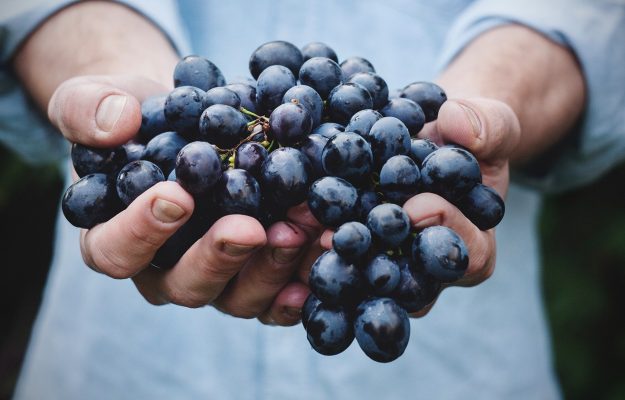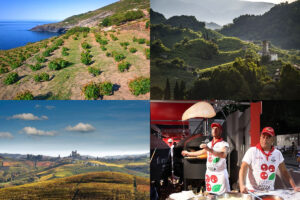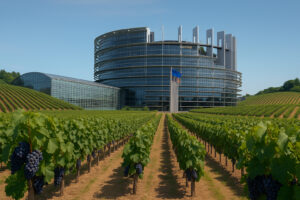When it comes to sustainability, both in the vineyard and in the cellar, the Italy of wine is absolutely avant-garde, but there is still no single standard, recognized in the first place by the Ministry of Agricultural Policies, that establishes certain and shared rules. The good news, in this sense, is that it will arrive within "the next campaign", as announced today by the same Ministry from the conference organized by Equalitas at the Milan Wine Week. Defining common minimum rules for a wine to be certified as sustainable has become essential in order not to undermine the concept of sustainability, abused and often used disproportionately, and the lack of these rules is slowing down the process of companies and the market towards sustainability, and certainly it has not helped, in this process, the national organizational system, which gives a key role to the regions, creating territorial dissonances. However, by working at the restricted supply chain table, in which the Ministry of Agricultural Policies, the Ministry of the Environment, Federdoc and the Unione Italiana Vini participate, the world of wine will soon have a single protocol, integrating and harmonizing three existing macrosystems. That is, the Sistema di Qualità Nazionale di Produzione Integrata (Sqnpi) (National Integrated Production Quality System), the transversal mark for all agricultural products of the Ministry born in 2018, Viva, which is the protocol of the Ministry of the Environment, and Equalitas itself, the standard certified by a third party that is led by Federdoc and Unione Italiana Vini, and which is based on the three pillars of sustainability: environmental, social and economic.
The expectations of the sector are high, complaining of a strong slowdown, especially in the last 5 years, of the path towards the single standard. “We believe - stressed Riccardo Ricci Curbastro, president of Federdoc - that it is absolutely urgent to arrive at the definition of a national standard of sustainability: companies need the policy to define a framework in which they can move in a market that is going in that direction. Without this recognition, there is no access to European funds. The news of these days and the same speech today by Giuseppe Blasi are positive and we hope that the times are really those announced”.
“Equalitas is a project born from below, from a need of the producers themselves - said Stefano Zanette, as president of the standard of sustainability - also to respond to a community increasingly sensitive to this issue. We are waiting for quick answers, but also feasible because viticulture is complex and different in different territories. I believe that the frontier of sustainability is the territorial action, very effective also from the point of view of communication, as we are doing in Prosecco Doc”.
Territorial sustainability but without taxation. “At the level of denomination - it has specified, in this regard, Riccardo Ricci Curbastro - it is not conceivable to limit the choices that refer to the freedom of enterprise, while it is important that the denominations make that activity of culture and conviction that is behind the virtuous behaviors, otherwise we continue to impose things without arriving at an active participation. And this is true not only for the sustainable”.
“The standard of the Ministry of Agriculture that will identify a minimum threshold of access for the certification of sustainability - said Michele Manelli di Salcheto, company of Nobile di Montepulciano, a pioneer in the pursuit of sustainability - will allow many to access, will not produce virtuosity, but it is fine. This will create a situation that we can compare to the qualitative pyramid of wines in which as you go up you go from IGT to DOCG. In this context Equalitas, and the other brands that may be born, will be placed in excellence and will ensure that the single standard gives guarantees. For the sake of comparison, the IGT should also be made with precise confirmations. It can be assumed that Viva, the experimental protocol that provides for a third party report, but it is not a certification, flows into a single standard. What is important is that for all certifications the criteria are common, in other words based on sustainability based on several pillars, transparency, verification by a third party and minimum requirements on virtuous practices. Thus the language will also be common. The recognition of the sustainability standard of the Ministry for Agricultural Policies will allow producers and consumers to have greater guarantees to receive the funds”.
Meanwhile, in the long years in which many experts, agronomists and technicians have begun to practice sustainability, and to develop protocols to measure it, the market has moved. Actually, not as much as one would expect given the now common and recurrent use of the term “sustainability” in the wine sector and beyond. “Millennials are the most attentive to sustainability - says Lorenzo Zanni, of the Scientific Committee of Equalitas, on the basis of surveys carried out by his research group of the University of Siena and other international institutions - but they do not manage to fit among the symbols on the labels. They feel that it is difficult to find these wines. However, only recently have social media begun to play a role in pushing for sustainability. Consumers with more years on their shoulders are certainly willing to spend more on these wines”. “In the United States - says Mike Veseth of the University of Tacoma-Washington, editor of The Wine Economist about the receptivity of "sustainable" wines in the most important wine market in the world - it is not clear whether the glass is to be seen half full or half empty. Nielsen’s data on out-of-restaurant distribution indicate a 2.1% increase in turnover and an 8.1% increase in volume, more than rose bubbles. Other studies indicate the willingness of informed consumers to pay up to $3 per bottle more on an average price of $20. However, the segment is not regulated, consumers are confused by unclear labels and, above all, their intention is only one. This intention has not been confirmed by winemakers who do not see the value of the grapes increase accordingly, except for a tenth of the expected growth. In short, there is a market, but it is necessary to verify what will happen because it is the supply that pushes it more than the demand”.
Copyright © 2000/2025
Contatti: info@winenews.it
Seguici anche su Twitter: @WineNewsIt
Seguici anche su Facebook: @winenewsit
Questo articolo è tratto dall'archivio di WineNews - Tutti i diritti riservati - Copyright © 2000/2025









































































































































































































